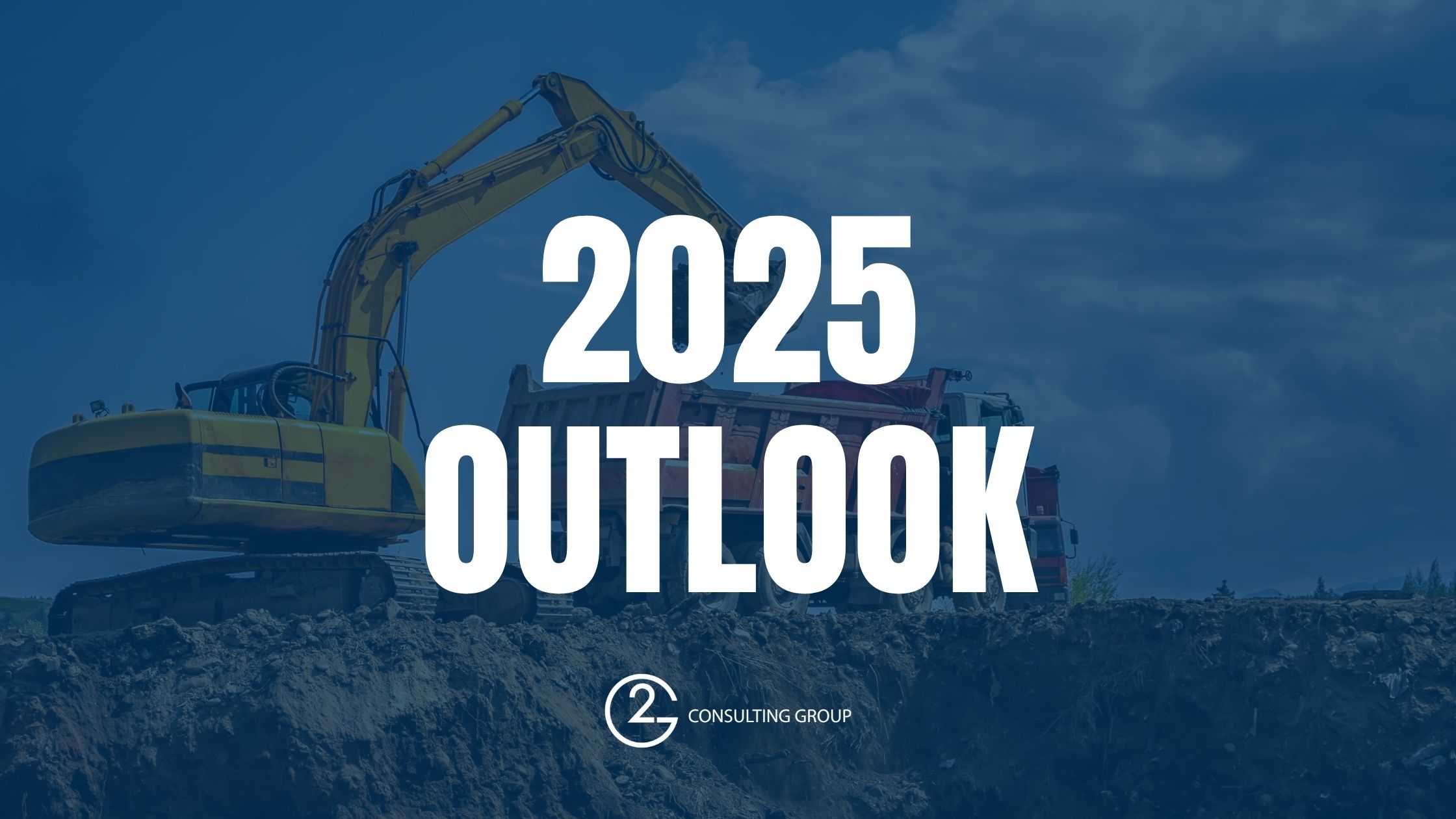Bolstered by continued investment in public infrastructure, Michigan’s construction industry will continue strong in 2025. Construction related companies have successfully navigated high interest rates, inflation and increased materials costs over the past several years on their way to banner years. 2025 will see some of those headwinds begin to ebb, but other challenges could emerge.
“We see 2024 as the final year of the pandemic’s most significant impacts,” said Mark Smolinski P.E. and Principal at Troy-based G2 Consulting Group. “Inflation and interest rates appear to be coming down while material and labor costs are stabilizing. So, the challenges that have dominated the industry in recent years are starting to normalize. However new challenges could arise.”
“Although we’re cautiously optimistic on the national and state economy, recessionary risks remain. President Trump’s agenda will be more fully revealed as we move deeper into 2025. Our industry needs to be ready to respond,” Smolinski said.
In the 2025-2029 Five-Year Transportation Program, MDOT Director Brad Wieferich outlined an approximate $15.5 billion investment in the state’s multimodal transportation infrastructure in the next five years while also addressing future funding uncertainty.
“MDOT is in the beginning stages of implementing a new approach to program development … to be better prepared for funding uncertainty and to mitigate risk in program development and delivery,” he said. “On the path to a more collaborative, inclusive and resilient future, a primary challenge that MDOT continues to face is future-proofing funding, project scopes and budgets. Inflation continues to increase project costs, and at current funding levels, MDOT will not be able to maintain the road and bridge conditions that are essential to providing an accessible and reliable transportation system.”
In 2025 alone, MDOT will invest $2 .9 billion to the preservation, maintenance, safety, and operation of Michigan’s state trunkline roads and bridges, plus a combined $993 million for the Aeronautics and Public Transportation programs, providing capital and operating assistance, technical support and safety oversight for passenger rail, rail freight, aeronautics, marine and port, and local and intercity bus sectors of Michigan’s transportation system. One of the most anticipated projects, the Gordie Howe Bridge, connecting Detroit and Windsor, is expected to see its first crossings in Sept. 2025.
Ken Swartz, Vice President at F.H. Paschen, sees the investment in infrastructure, particularly highways, bridges and roads, continuing in 2025. “Backed by federal and state funding, roads continue to be a focus. The sector probably peaked two years ago, but there is continuing strong demand now although that demand, and the funding to support it, may slowly decrease in the coming several years.”
“Waste and clean water are a hallmark of F.H Paschen’s business in Michigan. Aging infrastructure and changing system demands are a challenge for the Great Lakes Water Authority and its state and municipal counterparts. The good news is that these organizations are meeting the challenges head-on with many innovative and transformative investments in the pipeline. We’re also excited to be involved with several Detroit projects that will help continue and advance the city’s resurgence.”
Specific areas that G2 and its partners are monitoring in their 2025 outlook include:
- The Engineering and Design Services industry contributed $656B to U.S. GDP in 2023. Michigan was the #3 contributor behind only California and Texas. This investment supports thousands of high paying jobs and is expected to continue in 2025.
- Continued strong investment in public infrastructure.
- Michigan’s manufacturing industry is a mixed bag. Some sectors are expanding, however, the slower-than-expected demand for EV vehicles is a major stress for the automotive industry and could impact planned construction and expansion projects.
- Alternative energy, which has been strong, may be impacted by the Trump administration’s interest in oil and gas.
- Education spending will be the highest in more than a decade. Universities have housing shortages (demand exceeds pre-pandemic levels). Continued enrollment growth is expected through 2026 followed by an expected enrollment decline lasting a dozen years or longer (based on anticipated student population).
- Michigan’s agribusiness sector is poised for growth from food manufacturing, processing and delivery.
- Logistics and eCommerce facility demand remains strong. Communications, including telecom and data centers also poised for continued growth.
- Lower interest rates are enabling smaller projects, including residential, to make a modest return. Major projects continue to drive the industry, causing challenges for smaller projects, however the sector is again viable.
- 2025 will be an important year for AI in the construction industry. Certainly, companies that use AI effectively will uncover new efficiencies and new business practices to propel them forward.
“The Trump Administration appears focused on changing the way America does business at home and abroad. The impact of new policies is not yet fully understood in the construction sector,” Smolinski said. “Still, 2025 looks to be another good year for Michigan’s industry. We’re cautiously optimistic that 2026 and beyond will continue on similar trends. 2025 will be a consequential year, one that we hope will ultimately put the national economy and the Michigan construction industry on solid footing.”
